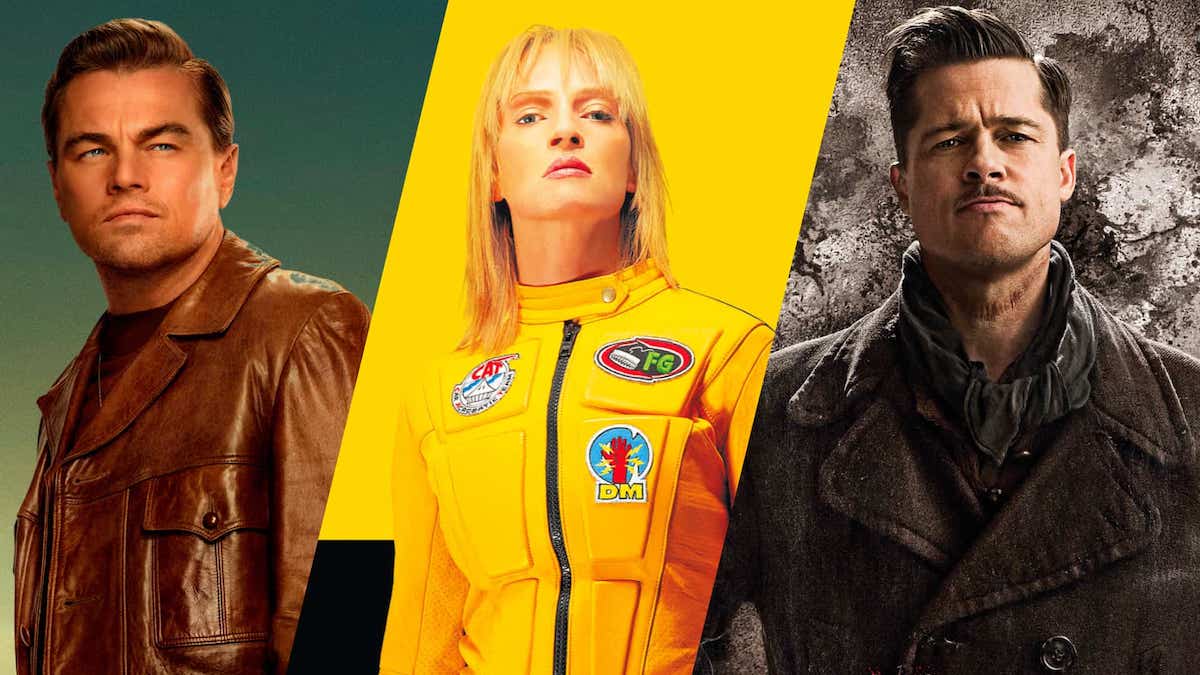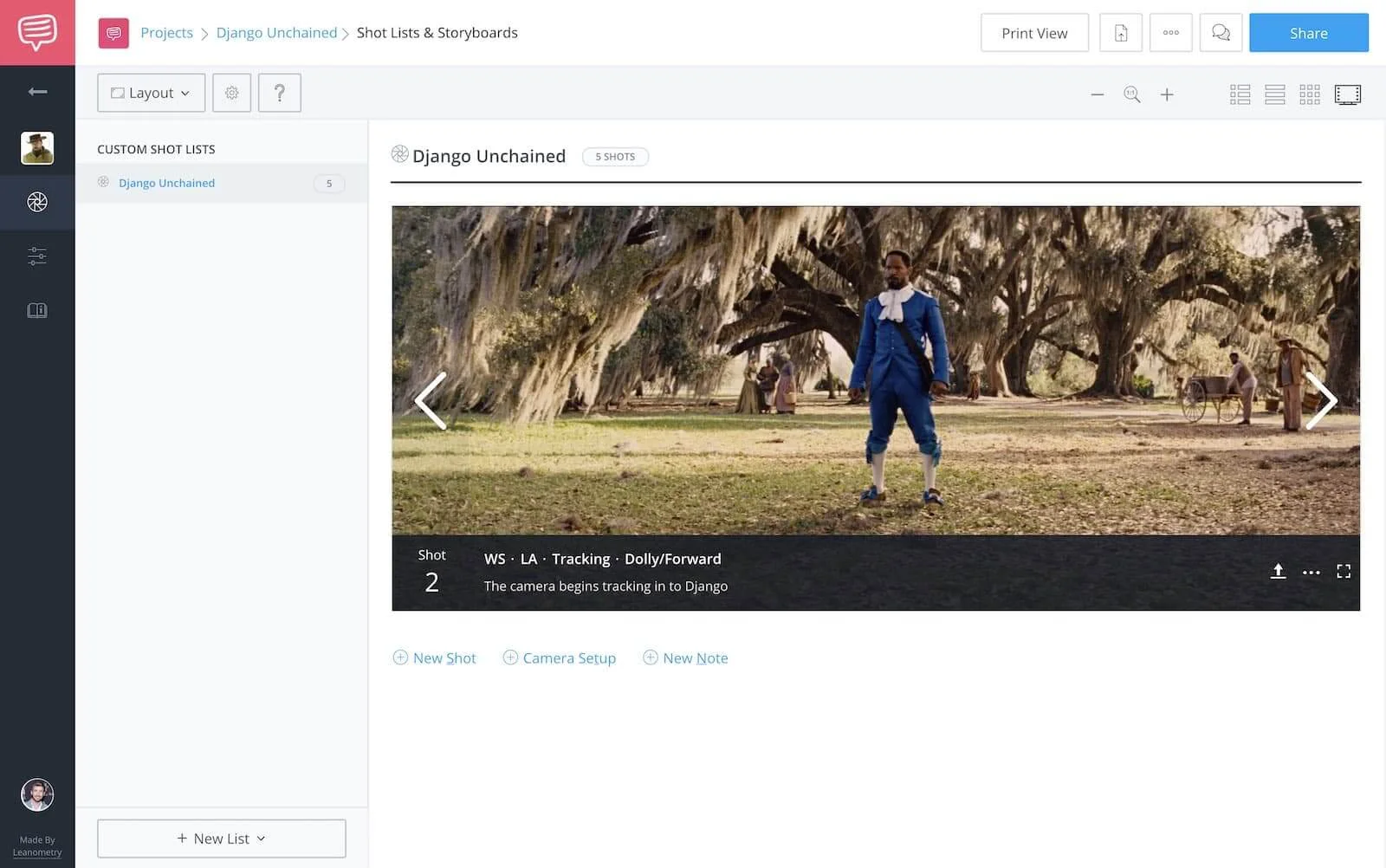Is there any filmmaker whose personality is more apparent when you watch his films than Quentin Tarantino? In his own quirky way, Tarantino has introduced us to some of the most shocking and moving emotional moments on film.
Of course, Quentin Tarantino’s writing style is a huge part of what’s made him so successful, but more than that, it is his shot choices that bring the audience deeper into the narrative. Tarantino, like all directors working at the top of their game, uses the camera as his most powerful storytelling implement.
Here are some of the most compelling ways Tarantino enhances story and character development with his shot list. What follows stands as required reading for directors who aim to achieve the thrills, tension, and comedy of Tarantino’s films.
Quentin Tarantino style
1. Tarantino stages wide shots
When a director wants to show a character in relation to his or her surroundings — or, when a director wants the audience to appreciate the full scope of a subject's predicament within those surroundings — nothing fits the bill as efficiently as a well-crafted wide shot.
Tarantino himself once said, “I want to top expectations. I want to blow you away.” His wide shots do just that — not surprising from a man who loves spaghetti westerns so much.
His wide shots let you take in every detail of the world he’s built for you. Here's a profile on Tarantino's long-time DP Robert Richardson, who has helped shaped the visual look of his work since Kill Bill.
Robert Richardson Cinematography Style • Subscribe on YouTube
Whether it’s the Bride battling the Crazy 88 gang in Kill Bill or Django surveying a burned-out home, Tarantino understands the power of the wide-shot to not only create tension, but to utilize the environment in revealing the desires of his characters.
So how does Quentin Tarantino do it? For a quick primer on wide shots in Tarantino films, watch this scene below, from Django Unchained. See if you can spot the wide shot. More to the point, we dare you to resist the wide shot:
The well-crafted, fully staged wide shot is a trademark of Tarantino's directing style.
Quentin Tarantino uses this wide shot to hit the audience, as well as Django's immediate opponent, with the full might of the character. Django's bright attire, mocked earlier in the scene, suddenly appears regal and imposing, like a superhero’s uniform.
And here, Tarantino's direction isn't content to simply present a static wide shot on a tripod. No, for maximum effect, Tarantino makes this a low angle tracking shot. It's heroic, and highlights why this movie is all about Django.
Click below to see how Tarantino uses detailed shot specs and camera moves throughout this scene to deliver its emotional payoff.
Quentin Tarantino plans details by creating a shot list.
Even though Quentin Tarantino style relies on sweeping wide shots, the director isn't afraid to move in closer to ramp up excitement. We look into the use of close-ups in Quentin Tarantino movies in our next section.
Auteur Theory Made Practical
Explore directing techniques used by the greats
Create works like these iconic auteur directors. Explore practical directing tips you can immediately put into action on your next project.
EXPLORE Auteur Directors
quentin tarantino movies
2. Tarantino loves his music
If there's one thing Tarantino loves more than movies, it just might be music. He often writes his script around music — not the other way around. Instead of choosing a song that might fit later, in post-production, Tarantino has these music choices in mind from day one.
Tarantino knows all the rules and when to break them. He applies this rule-breaking across the board, including how he juxtaposes and edits his music. Let's look at this process a little closer in this video.
Quentin Tarantino Music • Subscribe on YouTube
Tarantino has an undeniable love for music and a keen eye for how to build dynamic scenes around it. It's no wonder his soundtracks becomes some of the best selling ever.
quentin tarantino movies
3. Tarantino's sounds of violence
As we discussed, Tarantino loves to go off the beaten path with his music choices. He is also very good at using sound design in ways that seemingly break all the rules. In particular, during scenes of violence, Tarantino often switches between "realistic" and "stylistic" sound design.
Depending on the tone he's aiming for, Tarantino will make the violence real or he'll make it fun. And we take our cues of how to experience that violence from the sound design. Take a look.
Quentin Tarantino Sound • Subscribe on YouTube
When you combine Tarantino's music and sound, it becomes clear that he is operates on an aural level just as much on a visual level. That's why, love 'em or hate 'em, watching Tarantino's movies is an experience.
quentin tarantino movies
4. He shoots extreme close ups
Has there been anything more nerve-wracking and exciting than watching the Bride “wiggle her big toe” in Kill Bill Vol. 1 (2003)? This is a movie with insane fight sequences, but the way her toe is framed, you can’t look away.
The same way he goes wide to give you an expansive view, Quentin Tarantino can dive in close to give you detail on what’s important. Watch the preamble to the "big toe" scene here, and notice how the tension and style of the surrounding sequence leads up to the payoff of a close-up shot — an extreme close-up shot of a toe, to be specific.
Quentin Tarantino heightens drama with close-up shots.
When, after a 10-plus minute animation scene, Tarantino returns to Uma Thurman's character in the truck, and she at long last musters the ability to wiggle her big toe, here's the shot Tarantino presents in all its extreme close-up, toe-loving glory:
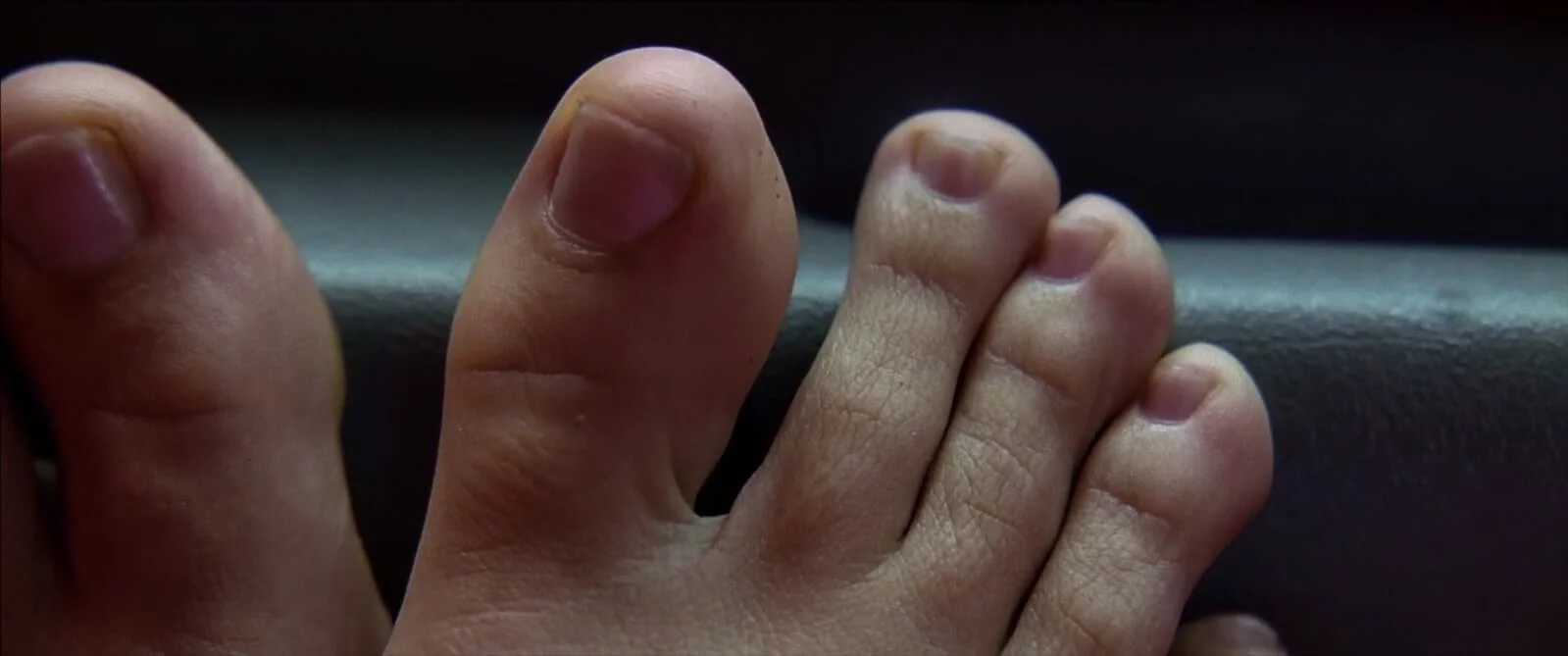
Feet and extreme close-ups
In Tarantino’s hands, with moments like this, a wiggling toe, an eye-patched face, or a pair of smoke-blowing lips reveal more about the characters than dialog ever could. As Tarantino has said, “It’s not only dialogue, it’s also mood, situation, and mise en scene.”
Tarantino will also use these close-ups for a very specific motif: food. In this video, we break down the many ways the director brings food into his work. He does this to create characterization, build power dynamics, and to create extreme tonal shifts.
Food in Quentin Tarantino movies • Subscribe on YouTube
quentin tarantino film style
5. Tarantino uses crash zooms
A “crash zoom,” also known as a snap zoom, is a sudden, rapid zoom in on a subject, and you start to see it in Quentin Tarantino’s work from Kill Bill onward. It’s an intense effect, and heightens the drama around any moment.
It’s like an extreme close-up on steroids.
Saying that characters in Tarantino films are often in peril is an understatement, and his use of the crash zoom heightens those feelings of dread and disorientation.
Stephen rushing to Calvin Candie’s aid or the Bride waking up from her coma are moments of maximum drama, and Tarantino appropriately employs the technique to keep the audience on the edge of their seats.
Watch this Quentin Tarantino crash zoom supercut video for a zippy tour through the director's use of the camera technique:
Crash zooms are a trademark of Quentin Tarantino's directing style.
Yes, it's a heavy-handed directing technique in that it visually shouts to a viewer, "Hey, pay attention to this particular moment and this particular character" — but an occasional heavy hand isn't necessarily a bad thing, especially for a director with a bold, energetic style like Tarantino.
Often, Tarantino lets his directing style lead him to very interesting places. Like the trunk of a car, as we explore in the next section.
tarantino Directing techniques
6. He gets in the trunk
This trademark Quentin Tarantino shot does an effective job putting the audience in the moment. No one ever said, “Yes, being inside a trunk is the most magical thing you can do,” and yet somehow Tarantino makes it work in almost all his movies.

No one’s idea of a good time: Tarantino's trunk shot in Reservoir Dogs (1992).
Yes, they're in almost all Tarantino films. We can forgive Django Unchained and The Hateful Eight for failing to deliver on this trademark of Quentin Tarantino's directing style, since automobile trunks didn’t exist in the Old West. Although it's worth mentioning that the director does provide a similar trunk-style looking-up POV shot of Django.
Here's the shot, in both senses of the word:
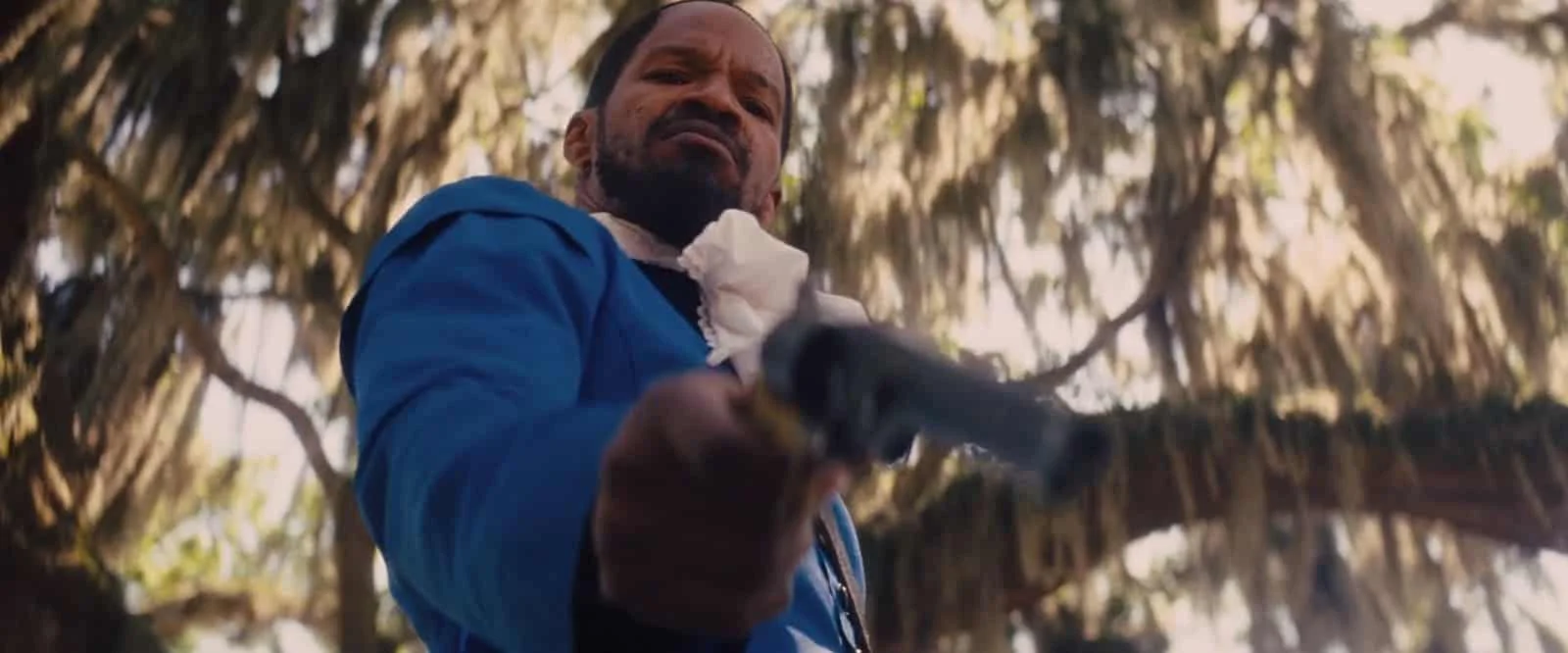
His trademark "trunk "POV shots.
Tarantino wants his audience to feel as if they are right there with the characters, and the closeness and confinement of this "trunk technique" ensures they will be.
When we look up at the Bride at the end of the first Kill Bill film, we understand Sofie Fatale’s fear. When the Bride finds herself on the other side, looking up at Budd in Kill Bill Vol. 2, we understand just how much the tables have turned.
Again, even when a car trunk isn't readily available, Tarantino employs his trunk-like POV shot technique. Here's an example from Inglorious Basterds:
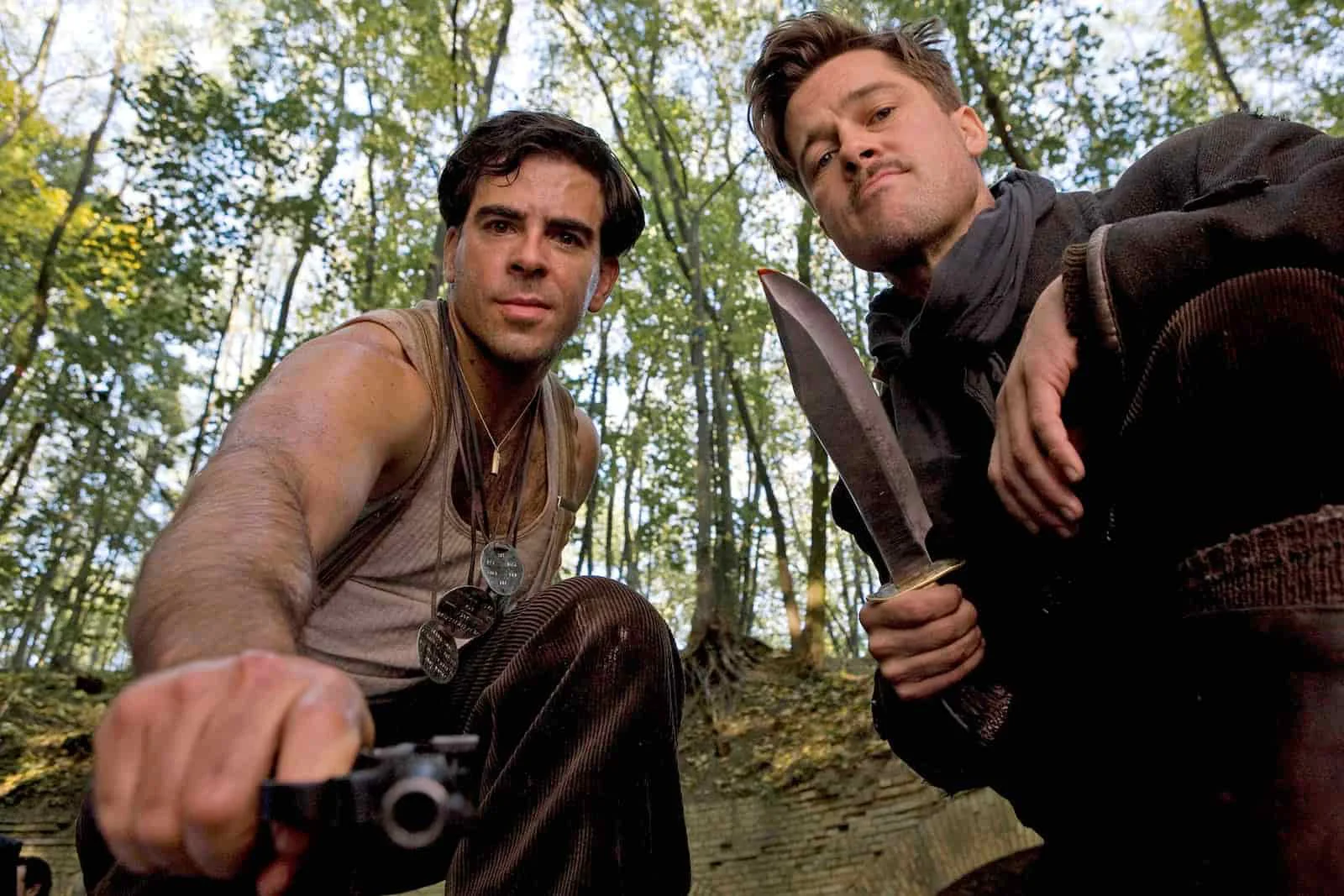
Trunk or trunk-like POV shots
These shots convey powerlessness in the viewer, and in the characters who are unfortunate enough to be motivating the particular POV shots in question, while emphasizing the literal upper-hand possessed by the characters looking down at us in the frame.
Viewers, and the ground- or trunk-level characters, find themselves at the mercy of the director and his other more powerful players.
how he gets his style
7. Tarantino absorbs movies
Tarantino has a great affinity for the audience, and it’s easy to still see him as the movie-obsessed video store clerk he was in the 90s. In interviews and quotes, QT explains how his movies are filled with the passion of a fan who wants to share something cool with us.
The director is notoriously vocal about sharing lists and titles of his favorite films, and their influence can be found in his own work — such as the spaghetti westerns mentioned above, and Shaw Brothers Hong Kong action films giving visual inspiration to Kill Bill.
Here's a video and interview with Quentin Tarantino discussing his five years working at now-closed Video Archives in Manhattan Beach. He also praises film geeks, and talks about how he proudly considers himself one:
Instead of going to film school, college, or even high school, Tarantino worked at Video Archives.
Ultimately, films by Quentin Tarantino bring the subconscious to the surface, and the use of these shot devices allows for the emotions of the characters to resonate more deeply with the audience.
It is that care and attention to the viewer that has kept his films exciting and fresh for almost three decades.
As he once said, “I don’t think the audience is this dumb person lower than me. I am the audience.”
Related Posts
up next
How David Fincher Directs
Quentin Tarantino has noted his love for the film Seven, from director David Fincher. So what better to explore in our next post than the directing style of this fellow master filmmaker?
From shot composition to color palettes, and from working with actors to maintaining an omniscient POV, get essential tips and techniques from another of the modern era's best filmmaking talents.
Next: How David Fincher Directs →
Auteur Theory Made Practical
Explore directing techniques used by the greats
Create works like these iconic auteur directors. Explore practical directing tips you can immediately put into action on your next project.
EXPLORE Auteur Directors
Showcase your vision with elegant shot lists and storyboards.
Create robust and customizable shot lists. Upload images to make storyboards and slideshows.
